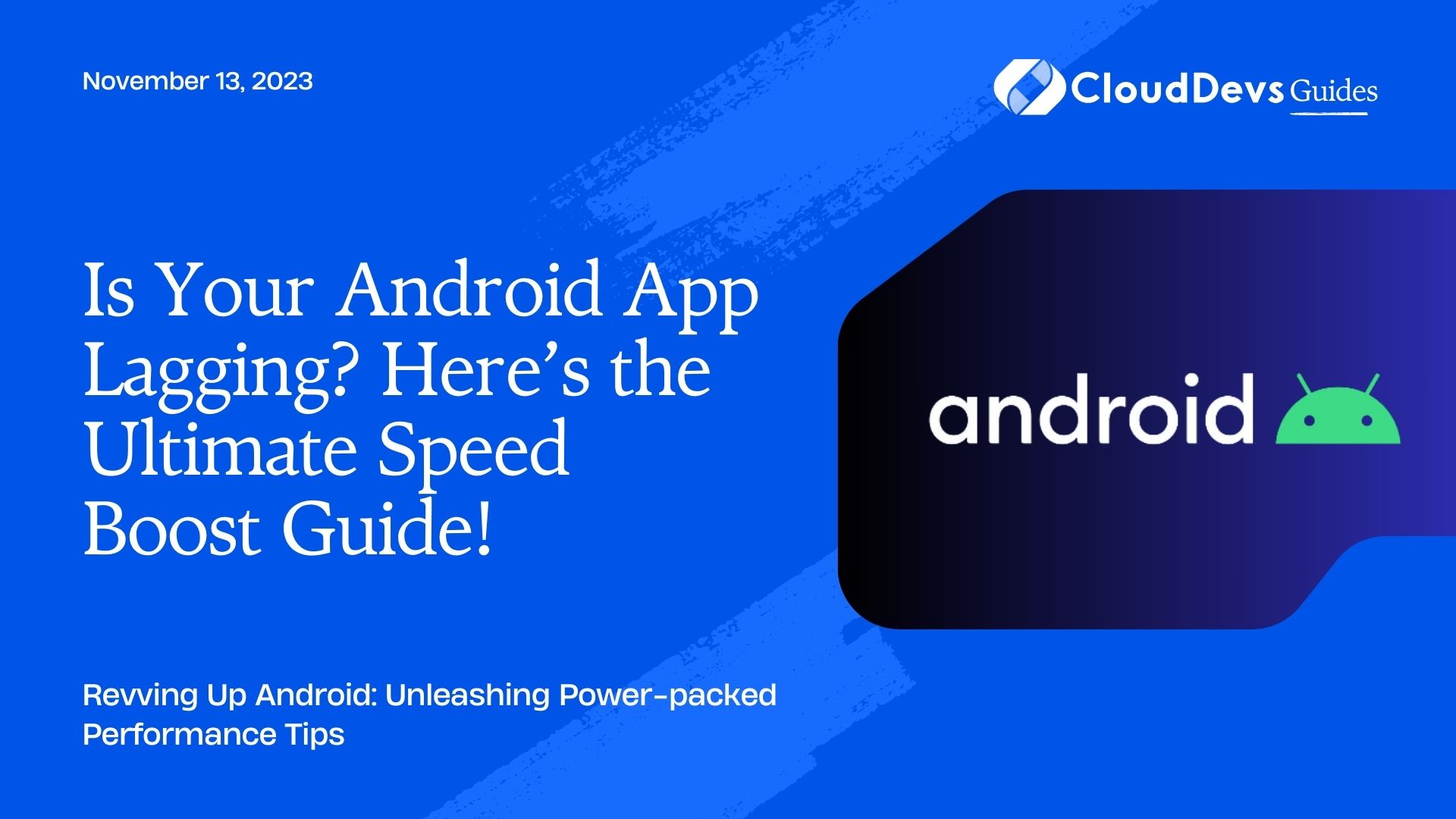Is Your Android App Lagging? Here’s the Ultimate Speed Boost Guide!
In the realm of Android app development, performance is paramount. Users have high expectations for smooth and responsive apps. A sluggish app can lead to user dissatisfaction, reduced engagement, and even uninstallations. To ensure your app retains users and delivers a top-notch experience, performance optimization should be at the forefront of your development process. If this seems daunting, consider seeking expertise by looking to hire Android developers who specialize in performance enhancements.
Table of Contents
In this article, we’ll delve deep into some proven tips and tricks to supercharge your Android apps. Let’s make your app a speed demon!
1. Profiling Before Optimizing
Before jumping into optimizations, use Android Studio’s built-in tools like the Profiler to pinpoint bottlenecks. Understanding where your app lags is essential to apply the right solutions.
Example: If your app’s CPU usage is spiking, the CPU Profiler will show which methods are causing these spikes. By focusing on these methods, you can make targeted optimizations.
2. Optimize Layout Hierarchies
Nested layouts can severely impact performance, especially during layout inflation.
Example: Instead of nesting multiple LinearLayouts, consider using a ConstraintLayout. It’s more flexible and often reduces the depth of your view hierarchy, resulting in faster layout rendering.
3. Recycle Views
RecyclerView is an Android component designed to display large data sets efficiently. It recycles views that scroll off-screen to reduce memory usage and lag.
Example: If you’re creating a chat app, instead of redrawing every message when a new one arrives, use a RecyclerView. As messages scroll off the top of the screen, they can be reused for new messages coming in at the bottom.
4. Use ProGuard
ProGuard is a code shrinker that removes unused code and resources, obfuscates your code, and optimizes bytecode.
Example: Let’s say you’ve used a library that provides 100 features, but you only use 10. ProGuard can remove the 90 unused features, decreasing the app’s size and potentially increasing its speed.
5. Avoid Using Finalizers
In Java, finalizers are used to perform cleanup before an object is garbage collected. However, they can cause unpredictable delays in garbage collection.
Example: If you’ve created a custom object that uses finalizers to free up native resources, consider using other cleanup methods or libraries like Android’s native `CloseGuard` for predictable performance.
6. Minimize Background Work
Use JobScheduler, WorkManager, or Foreground Services to perform background tasks. These tools ensure that tasks run efficiently without hogging resources.
Example: If you’re developing a weather app that updates every hour, use WorkManager to schedule periodic tasks. This ensures that updates happen without draining the battery or affecting app performance.
7. Optimize Bitmaps
Large bitmap files can lead to out-of-memory errors. Always ensure you’re loading images of the right resolution and size.
Example: Use libraries like Glide or Picasso that automatically resize and cache images. For a profile picture on a chat app, there’s no need to load a full-resolution 4000×4000 pixel image; these libraries can resize it to the required dimensions.
8. Use Native Code Wisely
While native code (like C and C++) can be faster in some scenarios, it can also introduce complexity.
Example: If you’re building a game engine and require intensive computations, using native code with the NDK might be beneficial. However, always weigh the benefits against the added complexity of managing two codebases.
9. Optimize SQL Queries
When using SQLite databases, ensure your queries are efficient. Use the `EXPLAIN QUERY PLAN` command to understand and optimize your SQL commands.
Example: If your app has a feature to search for user names, ensure you’ve indexed the ‘name’ column. Without indexing, searching through thousands of names can be slow; with an index, it becomes significantly faster.
10. Leverage Caching
Caching can save repeated computations and network requests.
Example: If your news app fetches top stories every hour, cache the results. When a user opens the app within this hour, display the cached data instead of making a new network request. Use libraries like Retrofit with OkHttp for efficient network caching.
Conclusion
Performance optimization is a continuous journey. As Android evolves, so will the tools and best practices. The key is to keep the user experience in focus and stay updated with the latest optimization techniques. If navigating this journey seems intricate, it might be beneficial to hire Android developers who are adept at these techniques.
Remember, an efficient app isn’t just about speed; it’s about delivering a seamless experience that keeps users coming back. Aim for excellence, and your app will shine in the vast Android ecosystem.
Table of Contents






